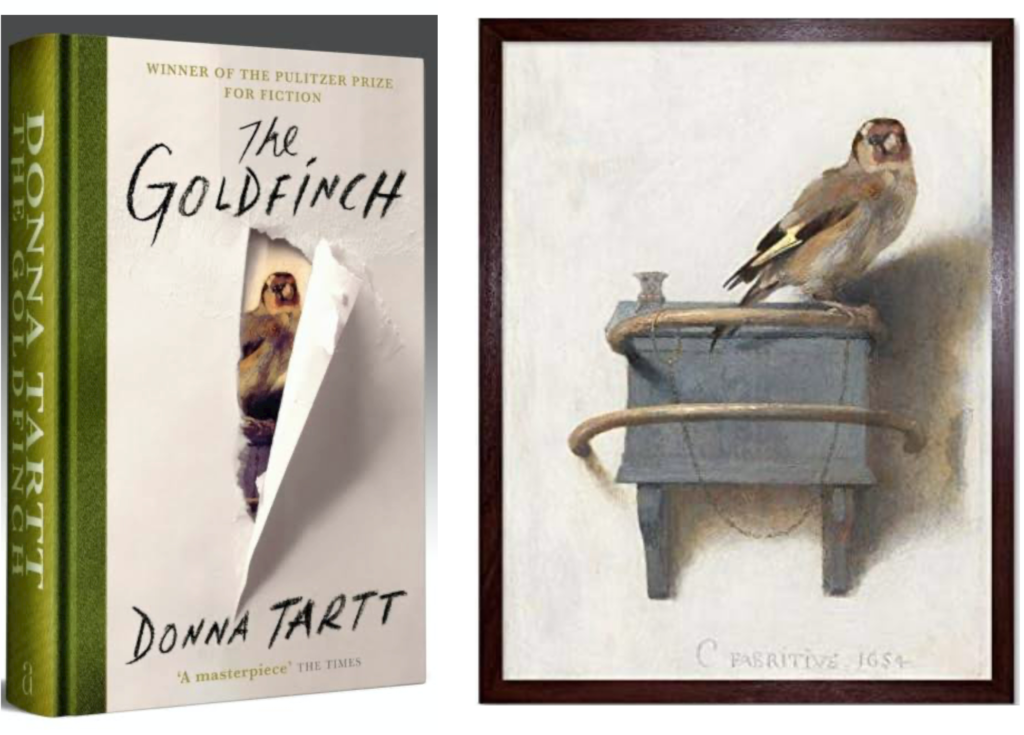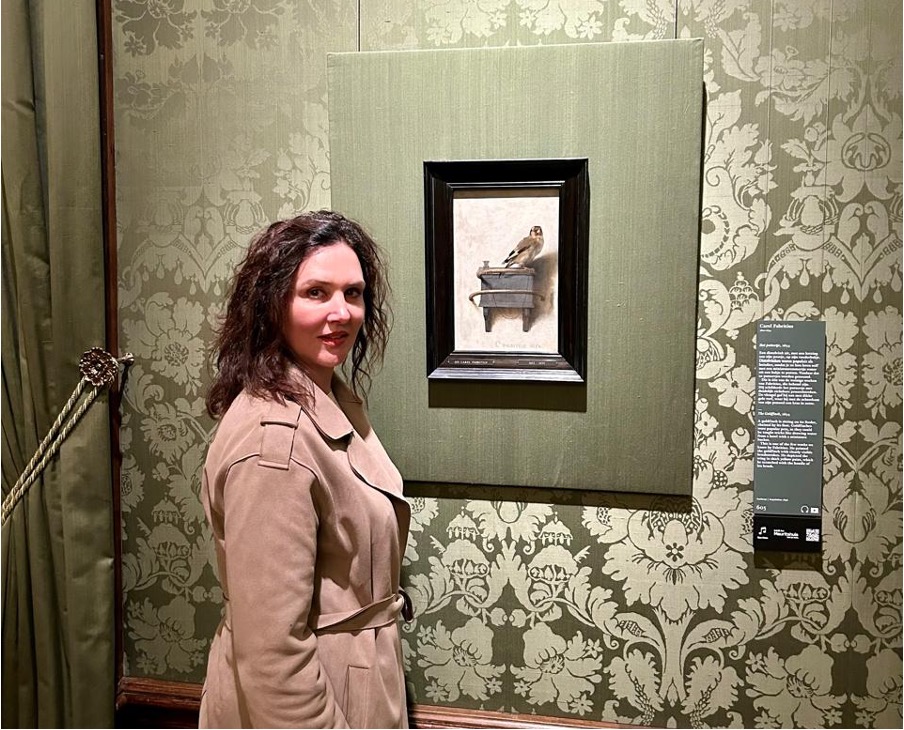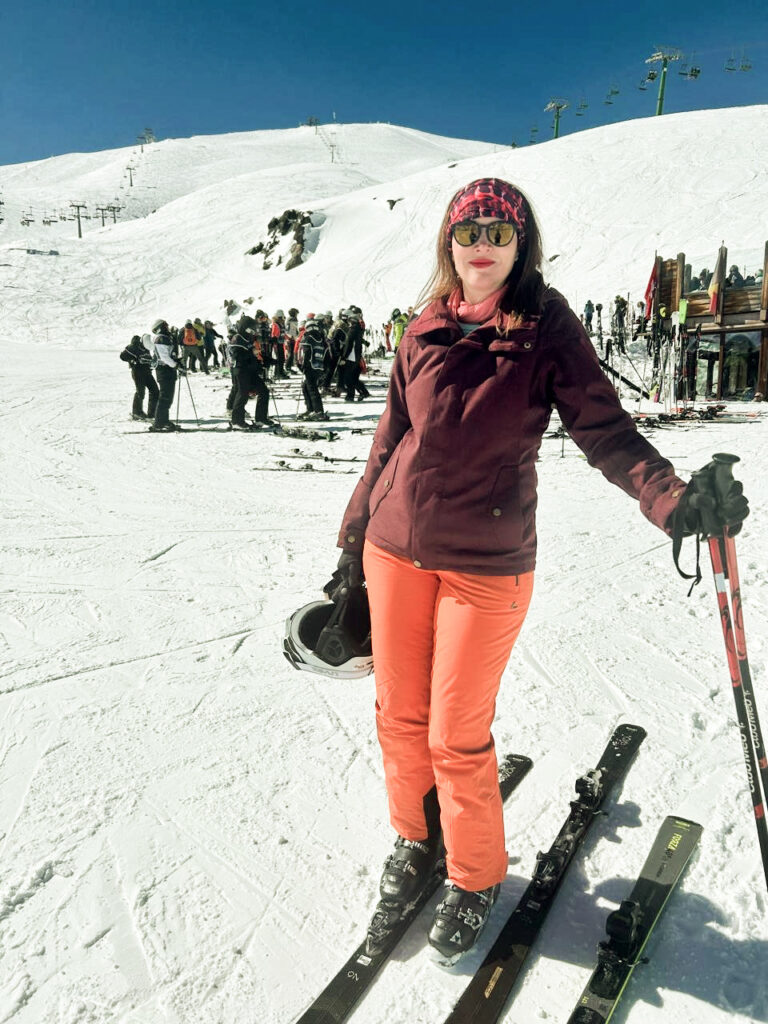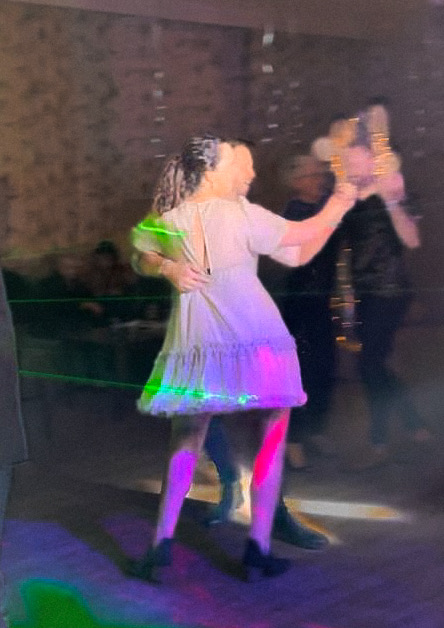





The image on the cover of Donna Tartt’s book The Goldfinch haunted me long before I became familiar with the story written on its pages. My Mom read the book for her book club, and the face of the small bird, a European goldfinch from a painting by a Dutch painter, Carel Fabritius, stared up at me for weeks through the illusion of a torn paper wrapping. The part of the painting that isn’t visible on the book’s cover is the perch the little bird is sitting on and the thin golden chain around its leg that keeps it from flying away. It is a painting of a bird with nowhere to go.

You can look at a picture for a week and never think of it again. You can also look at a picture for a second and think of it all your life – Donna Tartt, The Goldfinch
I often thought of that book cover. It resonated with me, and when I saw Fabritius’ painting in the Netherlands, I almost put it under my arm and exited the museum with it, just like the main character of Donna Tartt’s book. Probably because I felt like the bird in the painting. I always had a sense that I could do something great and had it in me to be extraordinary, but I felt stuck. I felt tethered to my life with my husband and dogs in a house outside the city and a mediocre career with no prospect of advancement. Now and then, I would flap my wings, as birds do, and test the chain holding me back. I would attempt to negotiate wriggle room to spread my wings for a moment – a short fellowship, a visit to a colleague overseas, a job in a different town. However, the chain around my leg didn’t give. Each bout of disgruntled chain-pulling and anxious wing-flapping to nowhere left me physically exhausted and emotionally drained and damaged my relationships.

Believe in your heart that you are meant to live a life full of passion, purpose, magic and miracles – Roy T. Bennet
Chained to my perch, I took the time to scrutinise every decision I ever made, big and small and wondered what my life would be like if I had just made a different decision here or there. It was like reading one of those books where one can choose what happens next – turn to page 13 if you decide to become a cardiothoracic surgeon or turn to page 26 if you continue your degree in architecture. The fun of these types of books is that one can go back and choose to read a different page if one doesn’t like the resultant ending of one’s first choice. Some of the decisions in my life were deliberately choosing the road less travelled, like becoming a cardiothoracic surgeon, while other choices I made because I was so tired of swimming upstream that I chose the easy way out. I often get asked why I decided to become a cardiothoracic surgeon, and I always truthfully answer that people told me I wouldn’t be able to do it, and I wanted to show them I could. However, pondering my life’s decisions was not helpful because my life is not a story in a book where I can backtrack to the page where I think I got it wrong.

One’s destination is never a place but a new way of seeing things – Henry Miller
I didn’t want to feel anxious and angry about being stuck in my life anymore. I knew something had to give, and I started considering the notion that the goldfinch might like sitting comfortably on its perch. It doesn’t have to look for food and is adored by its owner. What if it doesn’t even know the chain is a tether? Maybe the goldfinch even thinks the chain is beautiful. Simon Sinek says in an Instagram post that one’s success in life is entirely based on one’s perception. He explains that the human brain cannot comprehend the negative. It can’t be told not to do something. For example, if one is asked not to think of an elephant, the image of an elephant immediately comes to mind. He further explains that skiers use this perception exercise to navigate between trees when they ski. If skiers say to themselves: “Don’t hit a tree, don’t hit a tree”, eventually, all they see are trees, and invariably they are bound to crash into one. Instead, skiers think: “Look at the snow, follow the path, follow the path”, so the only thing they see is the path. Sinek concludes that it is the same with life. If one focuses on the obstacles, all one will see are the obstacles. However, one will see the path between the trees if one chooses to look for it. Ultimately, it is a choice of what one focuses on. It is all about perspective. I realised that I should stop trying to change my life and rather try to change my perception of my life. Appreciating the painting of the Goldfinch, one can admire the delicate brushstrokes of the golden chain around the bird’s foot or focus on the implication that this very chain keeps it from flying.

The world is full of magic things patiently waiting for our senses to grow sharper – WB Yeats
Despite my best efforts to convince myself that I was enjoying my comfortable life, I couldn’t escape the frequent paroxysms of anxiety about my wasted potential. It’s not easy to change one’s perspective about one’s life. It takes hard work and discipline not to indulge in self-pity. I often lapsed into focusing on what was missing in my life – heading straight for the proverbial tree. Maybe it is easier to adopt Michael Caine’s “Using the Difficulty” philosophy. He developed this philosophy, that he lives by, from personal experience as a young actor. He tells the story that he was acting in a play with a scene of a couple fighting. During one rehearsal, the actors improvised and got carried away. They threw a chair that got stuck in the stage door, preventing Caine from entering the scene on cue. He says he poked around the doorway and told the director he couldn’t get onto the stage. To which the director replied: “Use the difficulty! If it’s a comedy, fall over the chair; If it’s a drama, pick it up and smash it; But use the difficulty”. Caine says that from then on, he tells himself that there is never anything so bad that he can’t use it. He can’t let anything get him down. He says one must ask oneself: “How can I work with what I have?”

Stop focusing so much on the cards you were dealt and start focusing more on how you’re going to play that hand – Luis Garcia, Untamedhero
While sitting calmly on my perch, trying to focus on changing my perspective on life or, if that doesn’t work, how to use my difficulties, I sometimes still wonder: “How am I going to move forward in life?” A friend told me that when she felt stuck, her late fiancé used to say to her: “Just move your hips.” Implying that even if she doesn’t know how to move forward, the important thing is never to stop moving and that moving from side to side in one place is also okay. Exasperating advice if one feels tethered like the goldfinch in Fabritius’ painting, but profound words, nonetheless. Swaying your hips from side to side is a much more elegant and less tiring way of moving than an angry, anxious flapping of wings, straining against a chain that does not want to break. A new image of someone doing the cha-cha-cha popped into my mind. This Latin ballroom dance consists of a forward step, a backward step, a sidestep and a shuffle. I want to change the way I move through life. I want to work on moving my hips – shifting my weight from one foot to the other. I might mostly sway in one place, maybe sometimes to the rhythm of a song, and I hope to shuffle slightly forward occasionally. I am going to dance the cha-cha-cha with life!
I finally found my rhythm when I realised that even the steps backwards were part of the dance – unknown
